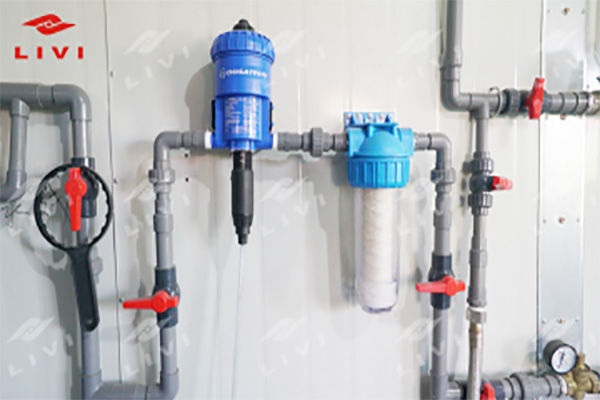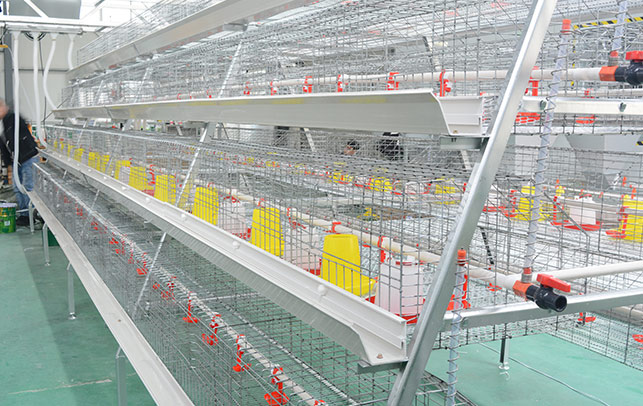Developing a Business Plan for an Egg-Laying Chicken Farm: A Guide from Livi Machinery, Your Poultry Equipment Manufacturer from China
Time : 2025-07-24
Are you considering venturing into the egg-laying chicken business? As a leading poultry equipment manufacturer from China, Livi Machinery is here to help you craft a comprehensive business plan that ensures your success. In this article, we’ll cover the essential elements of a business plan, tailored specifically for egg-laying chicken farms. Let’s dive in!
1. Executive Summary
Your executive summary should provide a concise overview of your business plan. Highlight the following key points:
– Business Name: Include your farm’s name and the legal entity type (LLC, sole proprietorship, etc.).
– Mission Statement: State your farm’s mission, such as providing high-quality eggs to the local community.
– Objectives: Define short-term and long-term goals for your farm.
– Funding Requirements: Outline the amount of capital needed to start and maintain your operation.
2. Company Description
This section should give readers an idea of who you are and what you do. Include:
– Company Background: Explain your experience in the poultry industry and any relevant qualifications.
– Business Model: Describe how your farm will operate, including the size of the flock, laying cycles, and egg collection methods.
– Unique Selling Proposition (USP): What sets your farm apart from competitors? It could be organic production, free-range chickens, or a commitment to sustainability.
3. Market Analysis
A thorough market analysis is crucial for understanding your target audience and competition. Here’s what to include:
– Industry Overview: Provide statistics and trends about the egg-laying chicken industry.
– Target Market: Define your ideal customers, such as local restaurants, grocery stores, or direct-to-consumer sales.
– Competitive Analysis: Identify your competitors and analyze their strengths and weaknesses.
– SWOT Analysis: Conduct a Strengths, Weaknesses, Opportunities, and Threats analysis for your business.
4. Organization and Management
This section should detail the structure of your farm and the team behind it:
– Management Team: Introduce the key members of your management team, their experience, and roles.
– Operational Structure: Describe the daily operations of your farm, including the workflow for egg collection, grading, and packaging.
– Partnerships: Mention any partnerships or collaborations that will benefit your business.
5. Services and Products
Clearly define the services and products you will offer:
– Egg Production: Outline the process of raising egg-laying chickens, including feed, housing, and health management.
– Egg Quality: Explain the measures you will take to ensure high-quality eggs, such as proper lighting and ventilation.
– Packaging and Distribution: Describe how eggs will be packaged and distributed to customers.
6. Marketing and Sales Strategy
A well-defined marketing and sales strategy is essential for attracting and retaining customers:
– Marketing Channels: Identify the channels you will use to promote your farm, such as social media, local advertising, and partnerships with grocery stores.
– Sales Strategies: Outline your sales approach, including pricing, promotions, and customer incentives.
– Customer Retention: Discuss how you will maintain customer loyalty, such as through loyalty programs or special offers.
7. Financial Projections
This section is critical for securing funding and understanding your farm’s financial health:
– Startup Costs: List all the costs associated with starting your farm, including equipment, feed, and labor.
– Operating Expenses: Detail your monthly operating expenses, such as utilities, feed, and salaries.
– Revenue Streams: Estimate your farm’s revenue, taking into account egg prices and expected sales volume.
– Cash Flow Statement: Provide a cash flow projection for the first few years of operation.
8. Funding Requirements
Outline the funding needed to start and maintain your egg-laying chicken farm:
– Capital Expenditures: List the one-time costs required to get your farm up and running.
– Working Capital: Explain the amount of working capital needed to cover daily operations.
– Funding Sources: Identify potential funding sources, such as loans, investors, or grants.
Conclusion
Creating a business plan for an egg-laying chicken farm requires careful planning and consideration of various factors. By following the guidelines outlined in this article, you’ll be well on your way to a successful operation. As a poultry equipment manufacturer from China, Livi Machinery is committed to providing you with the highest quality equipment to help your farm thrive.
Remember, a business plan is a living document. Regularly review and update it as your farm grows and evolves.
Tags












